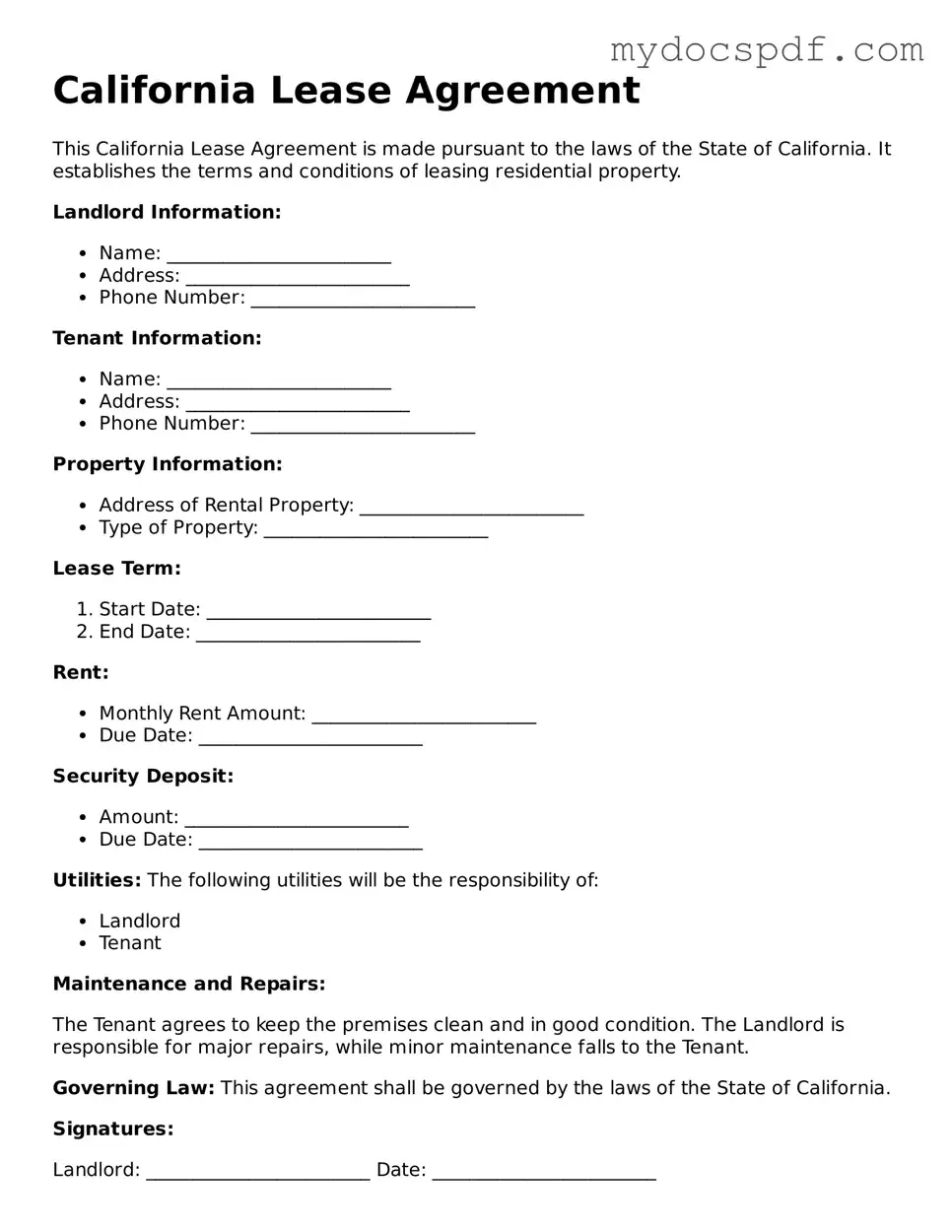California Lease Agreement
This California Lease Agreement is made pursuant to the laws of the State of California. It establishes the terms and conditions of leasing residential property.
Landlord Information:
- Name: ________________________
- Address: ________________________
- Phone Number: ________________________
Tenant Information:
- Name: ________________________
- Address: ________________________
- Phone Number: ________________________
Property Information:
- Address of Rental Property: ________________________
- Type of Property: ________________________
Lease Term:
- Start Date: ________________________
- End Date: ________________________
Rent:
- Monthly Rent Amount: ________________________
- Due Date: ________________________
Security Deposit:
- Amount: ________________________
- Due Date: ________________________
Utilities: The following utilities will be the responsibility of:
Maintenance and Repairs:
The Tenant agrees to keep the premises clean and in good condition. The Landlord is responsible for major repairs, while minor maintenance falls to the Tenant.
Governing Law: This agreement shall be governed by the laws of the State of California.
Signatures:
Landlord: ________________________ Date: ________________________
Tenant: ________________________ Date: ________________________
